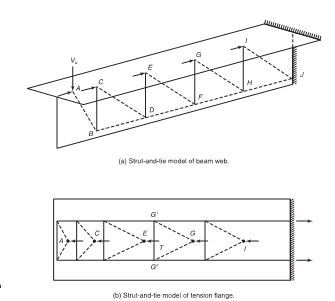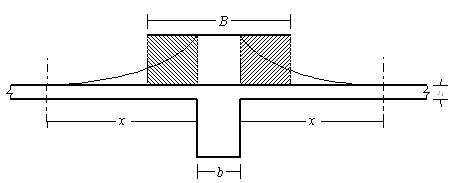While the term "strut and tie" is a fairly recent addition to the structural lexicon, the underlying concept of the truss analogy dates back to Ritter and Morsch at the turn of the 19th centurary. Engineers have been thinking critically about the disposition of compression in RC members for just about as long as there have been RC members.
Regardless, it was not my intent to suggest that the effective flange width provisions were based on strut and tie analyses. Rather, I was merely suggesting the use of strut and tie visualization as a device for understanding the need for a span based limit on effective flange width.
The code provision would seem to imply a load spread of about 1:4. For comparison, other code provisions (walls) in ACI imply load spread of 1:2 and, were strut and tie methods to be used in earnest, one could conceivably bump that up to around 1:1.5.
I like to debate structural engineering theory -- a lot. If I challenge you on something, know that I'm doing so because I respect your opinion enough to either change it or adopt it.


